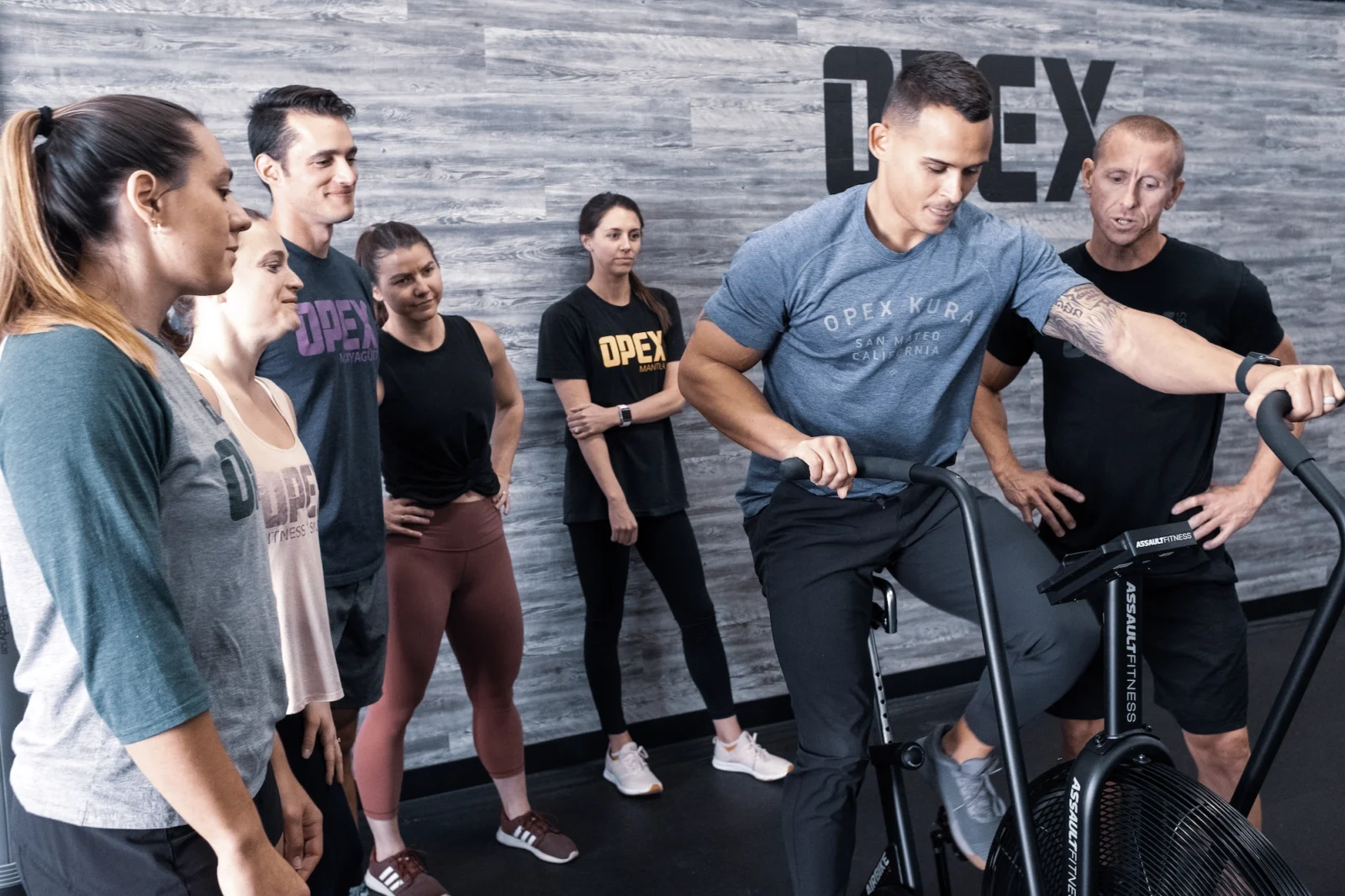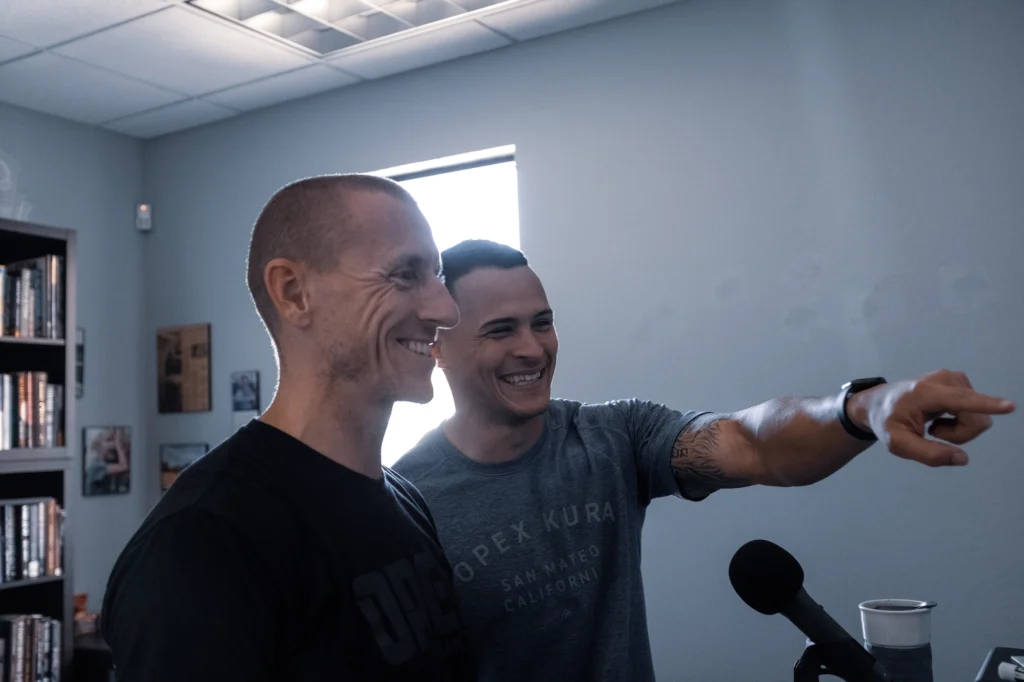Coaches Corner With Carl Hardwick: Group Coaching vs Individual Design

The debate between individual design and group coaching is a heated one. Here’s why I’ve hung my hat on individual design
The debate between individual design and group coaching is a long-standing one in the fitness industry.
For the last decade or so, I’ve chosen the individual design approach after years of running gyms that were group-centric and fell short of what I deemed to be success for my clients and coaches. This does not mean there is only one way, and it does not mean that anything but individual design is trash, but based on my experience, my biases and what I believe to be success in this industry, it is the best model for coaches and clients.
Thomas Sowell, the renowned economist, famously stated, “There are no solutions, there are only trade-offs, and you try to get the best trade-off you can get. That’s all you can hope for.” This quote resonates deeply when evaluating the pros and cons of individual design and group coaching. Each comes with its unique benefits and challenges, and the optimal choice frequently hinges on the context.
In this article, I will dig into the differences between each model from a coach and client perspective. I will do this by drawing from my personal experiences, the experiences of the thousands of coaches I’ve had the opportunity to educate and industry insight.
Individual Design
Individual design, or individualized fitness coaching, is a model that tailors training to a client’s unique needs, goals and lifestyle. It extends beyond workouts to encompass nutrition, behavior modification and lifestyle adjustments, providing a holistic solution to fitness.

Coach Pros
Relationship Building: This is the biggest differentiator between the models. Individual design provides an opportunity for a strong coach-client relationship, establishing a bedrock of trust. This allows coaches to delve deeper into their clients’ psyches, better understand their motivations, fears, values, goals and aspirations, and design personalized prescriptions that meet each client where they are.
Fitness as a Medium: An understanding of a client’s values enables coaches to link the fitness journey to these core beliefs, making it more purposeful and motivating. For instance, if a client highly values family, a coach can underscore how improved fitness can enhance their ability to engage in active family time. If a client values their vocation, a coach can connect how fitness can increase their cognitive function, energy and other attributes that will allow them to be a better employee or entrepreneur. In the individual design model, the coach has the opportunity to use fitness as a medium to connect to their client’s highest values and priorities.
Professional Wage: Individual design empowers coaches to demand a premium price for their services, reflecting the personalized attention and expertise involved. This allows coaches to earn a professional wage, paving the way for a sustainable career in fitness coaching while not following the traditional personal training model that inhibits scalability as it calls for the coach to be on the floor with each and every client for each and every training session.
Coach Cons
Relationship Building: Although this is my biggest differentiating pro, it can also be a con for some coaches. If a coach has no interest in creating a connection with their clients and building a relationship, this model will not be the model for them.
Risk of Over-Personalization: Some coaches might feel compelled to hyper-personalize their services to demonstrate their value, potentially leading to inefficiencies and a deviation from core fitness principles. It’s essential for coaches to strike a balance—personalizing while adhering to proven principles, and aligning those principles with the client’s unique needs and values.
Client Pros
Personalized Training: Clients receive a fitness, nutrition and lifestyle plan tailored to their unique circumstances, enhancing the effectiveness and relevance of their training. This personalization extends to all facets of their fitness journey, from workouts and nutrition to lifestyle changes and behavior modification.
Closer Relationship With Coach: A deep, trusting relationship with the coach can significantly enhance a client’s desire and commitment to their fitness journey.
Desire Over Motivation: A desire is a strong longing for something, while motivation is the driving force that compels us to take action. Desires are what we want, while motivation is what pushes us to achieve it. Creating connection and alignment with a client’s values to fitness can create a desire to be consistent and make fitness a part of their lives.
Client Cons
Higher Costs: The personalized attention and service that individual design offers typically comes at a higher cost compared to group coaching.
Group Coaching
Group coaching involves training multiple clients simultaneously, often in a class format. It fosters a sense of community and camaraderie, making it an attractive choice for many clients.

Coach Pros
Community Building: Group coaching cultivates a communal atmosphere that can motivate and inspire clients. Coaches can leverage this dynamic to foster a healthy competitive spirit and collective accountability.
Efficiency: Coaches can train multiple clients simultaneously, making it a time-efficient model.
Coach Cons
Limited Earning Potential: Given that group coaching is more cost-effective for clients, it leaves less room for coaches to earn a professional wage. Coaches may find themselves needing to coach large classes or multiple sessions to earn a sustainable income. This often leads to a race to the bottom from a pricing standpoint.
Limited Interaction With Clients: In large group settings, coaches may struggle to provide personalized attention to each client, which can reduce their role to that of a cheerleader, rather than a guide and mentor.
Can Lead to Frustration: It can be unfulfilling to see a percentage of clients not seeing the results that others may be seeing due to the programming not meeting their personal needs and aligning with their capabilities.
Retention: It may be tougher to retain clients that do not feel like their individual needs are being met.
Client Pros
Community: Clients can reap short-term benefits from the support and motivation of a community of peers sharing their fitness journey.
Cost-Effective: Group coaching sessions are typically more affordable than individual coaching.
Client Cons
Lack of Personalization: Group training programs often cater to the highest or average fitness level of the group, which will not meet each individual’s specific needs.
Motivation Over Desire: Without an opportunity for a coach to work one-on-one with each client to align and link their goals and values to fitness, the model heavily relies on motivation to keep clients engaged and coming back.
Unsustainable: Not all, but a lot of group models are built on intensity and unsustainable exercise programs. This usually leaves clients burned out, injured and decreases motivation to be consistent.
Narrow Focus: Most group models have a singular focus on exercises only and outside of challenges and special occasions, nutrition, lifestyle, and behavioral aspects are not the focus.
Final Thoughts
In the individual design model, coaches have the opportunity to form deep relationships with their clients, enabling them to create fitness programs that are not only personalized to the client’s physical needs but also aligned with their values. This approach often results in clients forming a strong desire to pursue fitness, rather than relying solely on fluctuating motivation.
The premium nature of individual design allows coaches to earn a professional wage, making it a sustainable career choice. However, this model may not suit every coach, especially those who prefer not to dive into relationship-building with clients.

On the other hand, group coaching offers the chance to create a community-driven atmosphere that can be highly motivating for clients. It is also a time-efficient model for coaches, allowing them to train multiple clients simultaneously. However, the group coaching model is not without its drawbacks. Coaches often face limited earning potential due to the cost-effective nature of group coaching for clients. The larger scale of group coaching can limit coaches’ interaction with individual clients, reducing their ability to provide personalized attention and guidance. It also poses a challenge in retaining clients who may not feel their individual needs are being met and may struggle to remain motivated over the long term.
For clients, individual design offers a personalized, holistic approach to fitness that takes into account their unique needs, goals, and values. However, this comes at a higher cost compared to group coaching. Group coaching, while being more affordable and offering a strong sense of community, often lacks the personalization necessary to meet each individual’s specific needs.
As we contemplate the trade-offs between the two models, it is critical to remember that the best coaching approach is one that meets your clients’ needs and goals while aligning with your coaching style and business model. Ultimately, the most successful approach will be one that delivers value, fosters a desire for fitness, and promotes consistency and long-term commitment. As coaches, our mission should be to guide clients on their fitness journeys in the most effective, sustainable way possible…for their unique needs.
See you next week where we will take a deeper look into resistance training.
See Carl’s previous column here.
Carl Hardwick, CEO of OPEX Fitness & CoachRx is a strong advocate for bringing honor to the coaching profession and raising the value of all fitness coaches. He lectures frequently about program design, business systems, and building a sustainable coaching career. Follow him on Instagram @hardwickcarl and OPEX Fitness on YouTube



